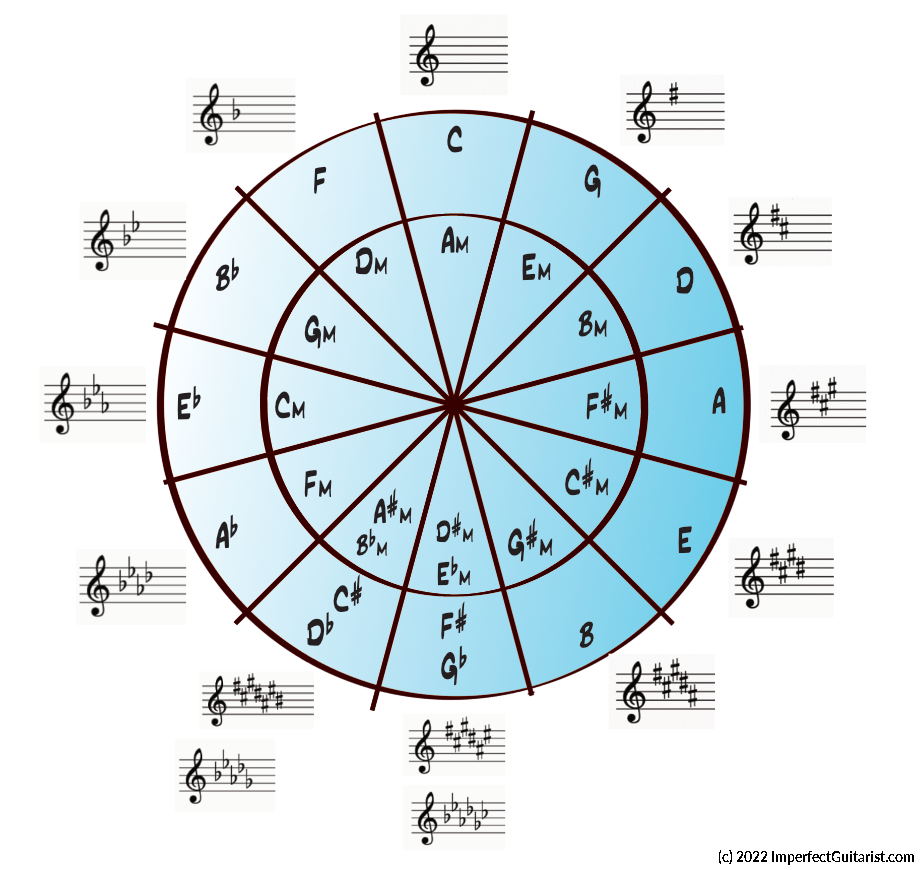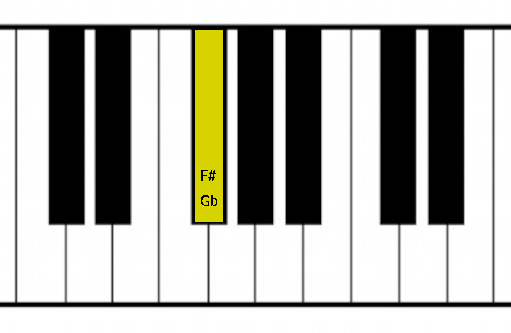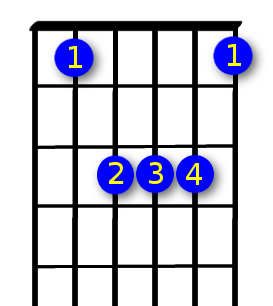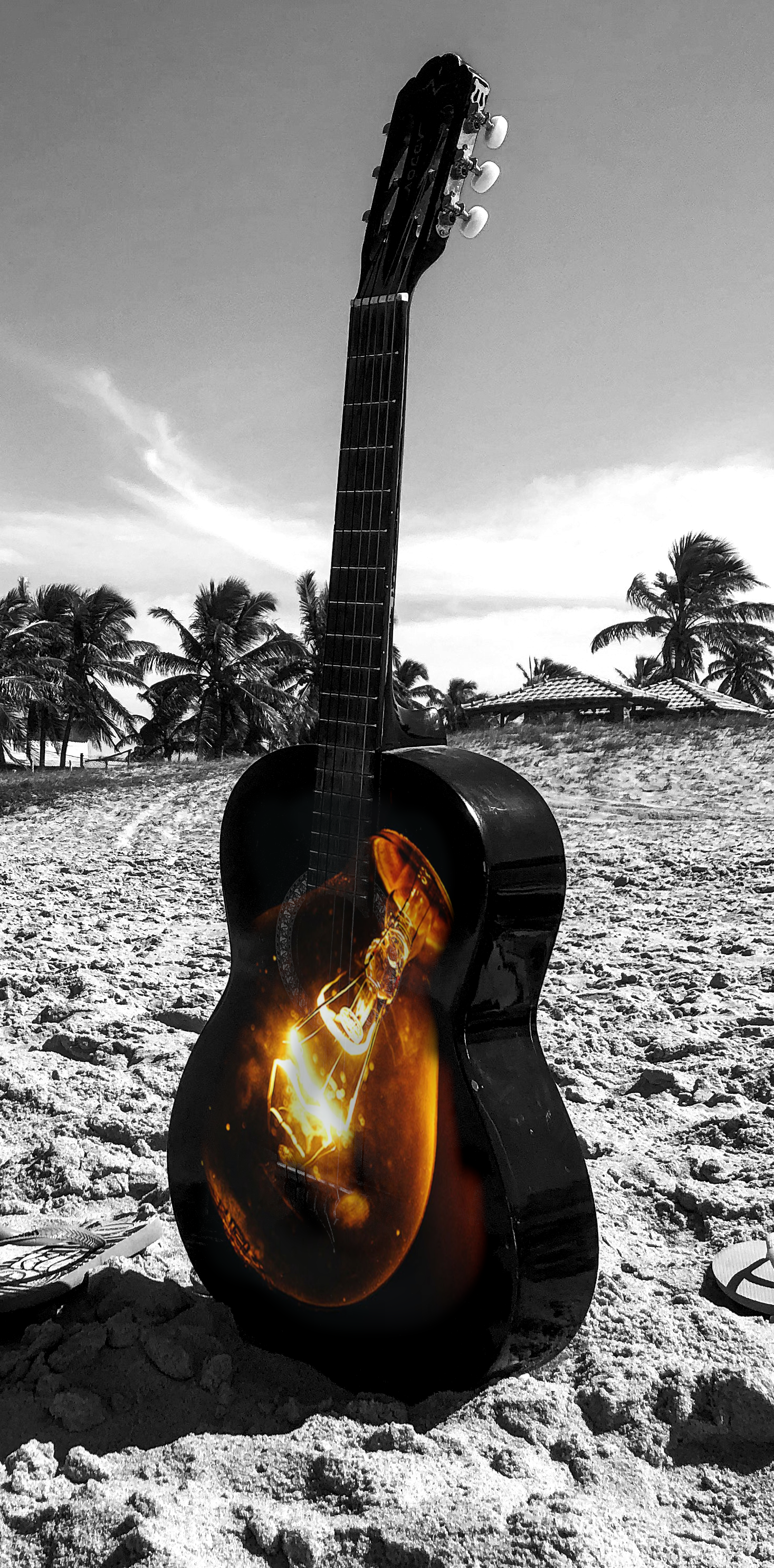The Circle of Fifths is a chart that shows the relationships between all the musical keys. The Circle of Fifths can be helpful, but it takes a little education for a newcomer to understand it. That’s why I made the Box of Fifths, because sometimes it’s easier for me to reference a simple list of keys. But the Circle of Fifths is great in that it squeezes a lot of good information into a fairly compact space. In this article I’ll help you understand the Circle of Fifths and make it a useful tool for your everyday playing.
the parts of the circle

- Circle exterior: these are what the key signatures look like using the treble clef. I recognize that this expects you to know how to read music notation. I may do a short primer on this at some point, but in the meantime this page will likely help some.
- Outer circle: These are the major keys
- Inner circle: These are the minor keys
the major keys
Let’s start with the outer circle. Circles don’t have a beginning or an end, and that’s likely part of the point of the Circle of Fifths. Even so, the usual starting spot is the top of the circle with the key of C, the key with no sharps or flats. Working clockwise around the circle, the next key is G. Do this: use the musical alphabet to count from C to G. Now count the letters (including the C) and you’ll get 5.

Yep, there’s your first fifth. This is called an interval, which is a way to describe the distance between notes. There are of course other intervals: thirds, fourths, sixths, and so on. Let’s do the next slice on the circle, going from G to D:

There’s your next fifth. This works the whole way around the circle while you’re going clockwise. If you decide to be contrarian and go counter-clockwise you will find that it’s a circle of fourths, as noted if you start at C and go to F:

Bonus! It’s a circle of fifths and a circle of fourths, all for the same low price!

the minor keys
Let’s move on to the minor keys.
If you look for A minor (Am) on the circle, you’ll find that it lives right under C major. This is because the key of A minor also has no sharps or flats. There’s a bit more to the minor story as there are a variety of minor scales that do put in a sharp or flat (e.g. natural minor, harmonic minor, melodic minor, coal miner, minor league, minor celebrity…) but in general it’s a good thing to know that A minor has no sharps and flats just like C major. The key of A minor is called the relative minor to C major.
An interesting tidbit is that you’ll find the relative minor for all major keys is also the sixth of that key. For example:


Conversely, the relative major of minor keys is the third of that key:

(And suddenly it looks like a Jackson Five song. I’m going to say that particular “five” is a coincidence.)
one note, two names
You’ll see that at the bottom of the circle are two keys that each have two names: F# is also Gb, and C# is also Db. This is one of those things in music theory that really is theoretical, which is to say it’s almost just an exercise in semantics (the official music theory term for this is “enharmonic“). When we discuss a sharp we’re talking about moving a given note up a half step, so F becomes F sharp (F#). When we discuss a flat we’re talking about moving a given note down a half step, so G becomes G flat (Gb). As you can see, F# and Gb are the same note:

Here are more examples of other notes that might be referenced differently depending on context:



The note name chosen usually (but not always) depends on context. For example, when I play a song in the key of F major, I call the IV chord a Bb, not an A#. Calling it an A# chord would be accurate, it would just feel strange to me.
so, now what?
You can look at the Circle of Fifths as both a reference and an interesting way to represent all the musical keys. And if you find yourself studying the circle for a while you might notice some interesting relationships. Here are a few you might not spot immediately:
- The sharped notes are themselves added to ensuing major keys in fifths, starting with F sharp in the key of G and going all the way to the key of C#: F#, C#, G#, D#, A#, E#, B#
- The flats are subtracted in fifths if you start at the bottom of the circle with the key of G flat and go clockwise: Cb, Gb, Db, Ab, Eb, Bb
- For major keys you can use the circle of fifths to find the 1, 4, 5 chords by looking one slice to the left for the IV chord and one slice to the right for the V chord. This is nearly true for the minor keys except the V chord is generally changed to a Major (yes, even in a minor key).
I hope this article has helped you make some sense of the cool but sometimes opaque Circle of Fifths. If you have any comments please feel free to drop me a note at imperfectguitarist@outlook.com.




